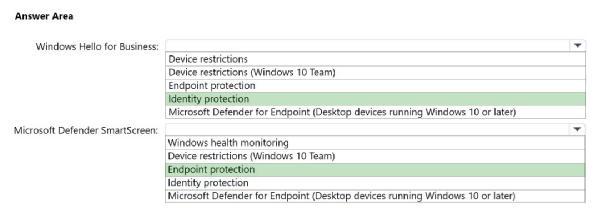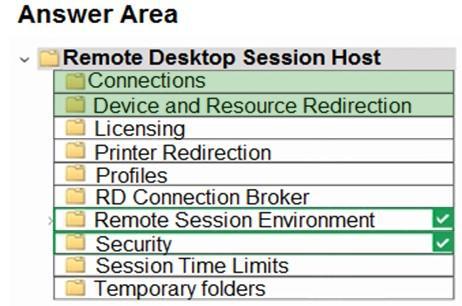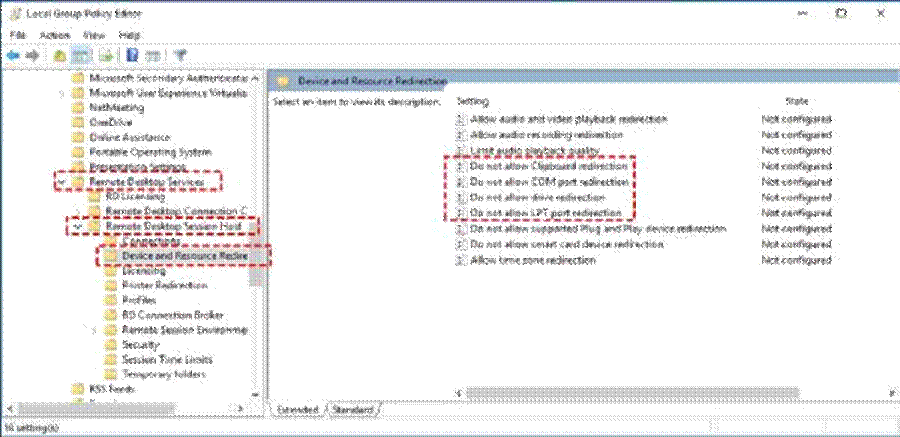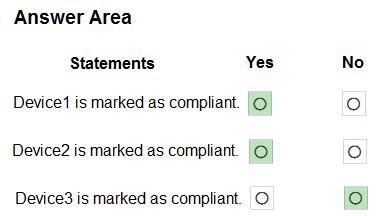Microsoft MD-102 Übungsprüfungen
Zuletzt aktualisiert am 08.09.2025- Prüfungscode: MD-102
- Prüfungsname: Endpoint Administrator
- Zertifizierungsanbieter: Microsoft
- Zuletzt aktualisiert am: 08.09.2025
HOTSPOT
You have a Microsoft 365 subscription.
You have 25 Microsoft Surface Hub devices that you plan to manage by using Microsoft Intune.
You need to configure the devices to meet the following requirements:
Enable Windows Hello for Business.
![]()
Configure Microsoft Defender SmartScreen to block users from running unverified files.
![]()
Which profile type template should you use for each requirement? To answer, select the appropriate options in the answer area. NOTE: Each correct selection is worth one point.
Hot Area:
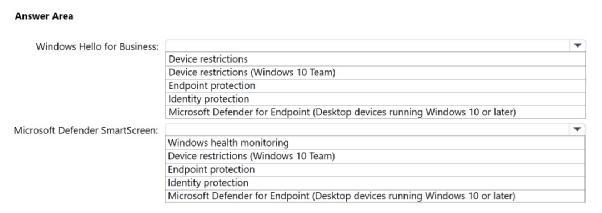
HOTSPOT
You have a Microsoft 365 subscription.
You have 25 Microsoft Surface Hub devices that you plan to manage by using Microsoft Intune.
You need to configure the devices to meet the following requirements:
Enable Windows Hello for Business.
![]()
Configure Microsoft Defender SmartScreen to block users from running unverified files.
![]()
Which profile type template should you use for each requirement? To answer, select the appropriate options in the answer area. NOTE: Each correct selection is worth one point.
Hot Area:

HOTSPOT
Your network contains an Active Directory domain. The domain contains 1,000 computers that run Windows 11.
You need to configure the Remote Desktop settings of all the computers. The solution must meet the following requirements:
Prevent the sharing of clipboard contents.
![]()
Ensure that users authenticate by using Network Level Authentication (NLA).
![]()
Which two nodes of the Group Policy Management Editor should you use? To answer, select the appropriate nodes in the answer area. NOTE: Each correct selection is worth one point.
Hot Area:
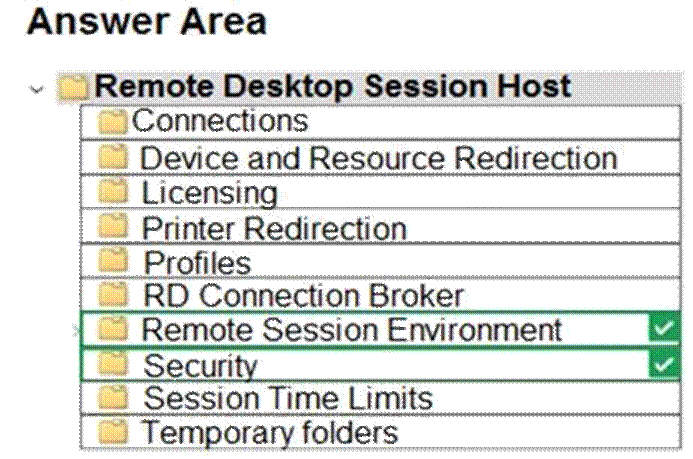
You have a Microsoft Deployment Toolkit (MDT) deployment share named DS1.
In the Out-of-Box Drivers node, you create folders that contain drivers for different hardware models.
You need to configure the Inject Drivers MDT task to use PnP detection to install the drivers for one of the hardware models.
What should you do first?
- A . Import an OS package.
- B . Create a selection profile.
- C . Add a Gather task to the task sequence.
- D . Add a Validate task to the task sequence.
You have a Microsoft Deployment Toolkit (MDT) deployment share named DS1.
In the Out-of-Box Drivers node, you create folders that contain drivers for different hardware models.
You need to configure the Inject Drivers MDT task to use PnP detection to install the drivers for one of the hardware models.
What should you do first?
- A . Import an OS package.
- B . Create a selection profile.
- C . Add a Gather task to the task sequence.
- D . Add a Validate task to the task sequence.
You have a Microsoft Deployment Toolkit (MDT) deployment share named DS1.
In the Out-of-Box Drivers node, you create folders that contain drivers for different hardware models.
You need to configure the Inject Drivers MDT task to use PnP detection to install the drivers for one of the hardware models.
What should you do first?
- A . Import an OS package.
- B . Create a selection profile.
- C . Add a Gather task to the task sequence.
- D . Add a Validate task to the task sequence.
You have a Microsoft Deployment Toolkit (MDT) deployment share named DS1.
In the Out-of-Box Drivers node, you create folders that contain drivers for different hardware models.
You need to configure the Inject Drivers MDT task to use PnP detection to install the drivers for one of the hardware models.
What should you do first?
- A . Import an OS package.
- B . Create a selection profile.
- C . Add a Gather task to the task sequence.
- D . Add a Validate task to the task sequence.
You have a Microsoft Deployment Toolkit (MDT) deployment share named DS1.
In the Out-of-Box Drivers node, you create folders that contain drivers for different hardware models.
You need to configure the Inject Drivers MDT task to use PnP detection to install the drivers for one of the hardware models.
What should you do first?
- A . Import an OS package.
- B . Create a selection profile.
- C . Add a Gather task to the task sequence.
- D . Add a Validate task to the task sequence.
HOTSPOT
You have devices that are not rooted enrolled in Microsoft Intune as shown in the following table.

The devices are members of a group named Group1.
In Intune, you create a device compliance location that has the following configurations:
Name: Network1
![]()
IPv4 range: 192.168.0.0/16
![]()
In Intune, you create a device compliance policy for the Android platform. The policy has the following configurations:
Name: Policy1
![]()
Device health: Rooted devices: Block
![]()
Locations: Location: Network1
![]()
Mark device noncompliant: Immediately
![]()
Assigned: Group1
![]()
The Intune device compliance policy has the following configurations:
Mark devices with no compliance policy assigned as: Compliant
![]()
Enhanced jailbreak detection: Enabled
![]()
Compliance status validity period (days): 20
![]()
For each of the following statements, select Yes if the statement is true. Otherwise, select No. NOTE: Each correct selection is worth one point.
Hot Area:
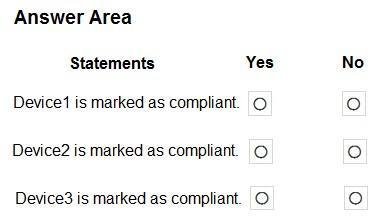
You have a Microsoft 365 subscription that uses Microsoft Intune Suite.
You use Microsoft Intune to manage devices.
You use Windows Autopilot to deploy Windows 11 to devices.
A support engineer reports that when a deployment fails, they cannot collect deployment logs from failed device.
You need to ensure that when a deployment fails, the deployment logs can be collected.
What should you configure?
- A . the automatic enrollment settings
- B . the Windows Autopilot deployment profile
- C . the enrollment status page (ESP) profile
- D . the device configuration profile

